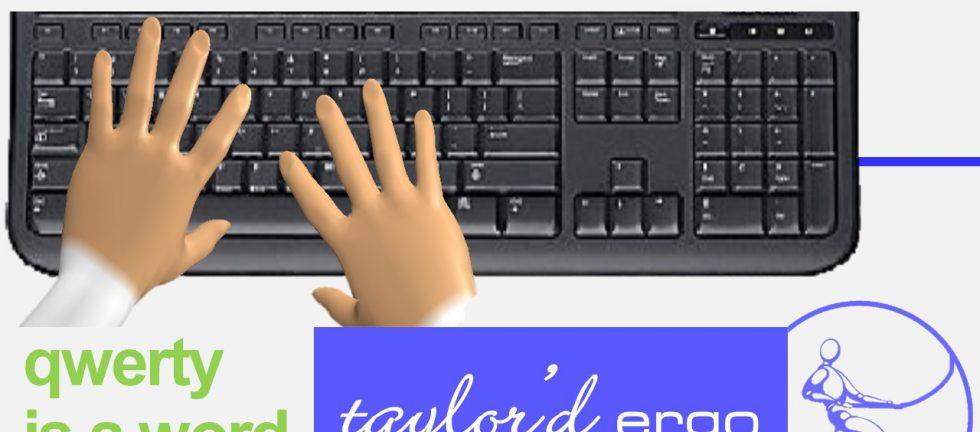Scrabble is a great rainy-day cottage activity, and one that I can occasionally win, so we play it a lot. The next time you’re stuck with a Q and can’t find a U, try for QWERTY, which apparently is a word. The QWERTY keyboard is named for the five top left characters on the letter section of the keyboard. What I found interesting when I looked it up is that, according to thefreedictionary.com, QWERTY has come to mean “using an older system or product when a newer one would be better.”
You may know about the origin of the keyboard, but if you don’t, it’s a really interesting story and a bit of a metaphor for how we approach some aspects of our lives. The keyboard was designed in the late 1800s; many people think that the design was intended to keep commonly used letters apart, to reduce the risk of the type bars tangling if the typist struck two simultaneously.
My mom was a very fast typist. I remember, as a child, watching with fascination at the type bars striking the ribbon and creating letters on paper. (And the “ding” as she neared the end of each line!) When I tried to type fast nonsensical words to see if I type like mommy, the bars invariably did get tangled, and I would get frustrated. (Hmm…she must have, too!) We won’t even talk about how hard she had to pound on those keys to make an image; electric keyboards were an enormous ergonomic improvement over the manual keyboard!
Ergonomically superior layouts such as one called the DVORAK present the most often used keys under the “home row”; this is more efficient and would therefore be easier to learn and easier to use. However, the QWERTY keyboard persists. Nobody wants to learn to use a new keyboard layout. Little wonder – I tried for a few months, many years ago, and found it extremely hard to “unlearn” what had been drilled into my brain during years of practice. I’m sure some people have learned to use the DVORAK layout (patented in 1936), but I confess that I gave up. The better bet might be to teach the “new” keyboard layout in typing class. And yet…we don’t.
The metaphor? How many things do we continue to do the same as always, even when there is a better way? A client recently introduced height-adjustable tables at a workstation where people had been working at a fixed (non-adjustable) height. The client installed the tables and adjusted them to the middle of the height range that I had provided, so an “average” height person should have been comfortable. The employees immediately lowered the table to exactly the height of their previous table, and they left it there. We’re working on it….taller employees are gradually raising the table, but it’s taking a remarkable amount of time. to bring everyone around.
I hope, in my own life, I can recognize other QWERTY situations and take the initiative to DVORAK them!


